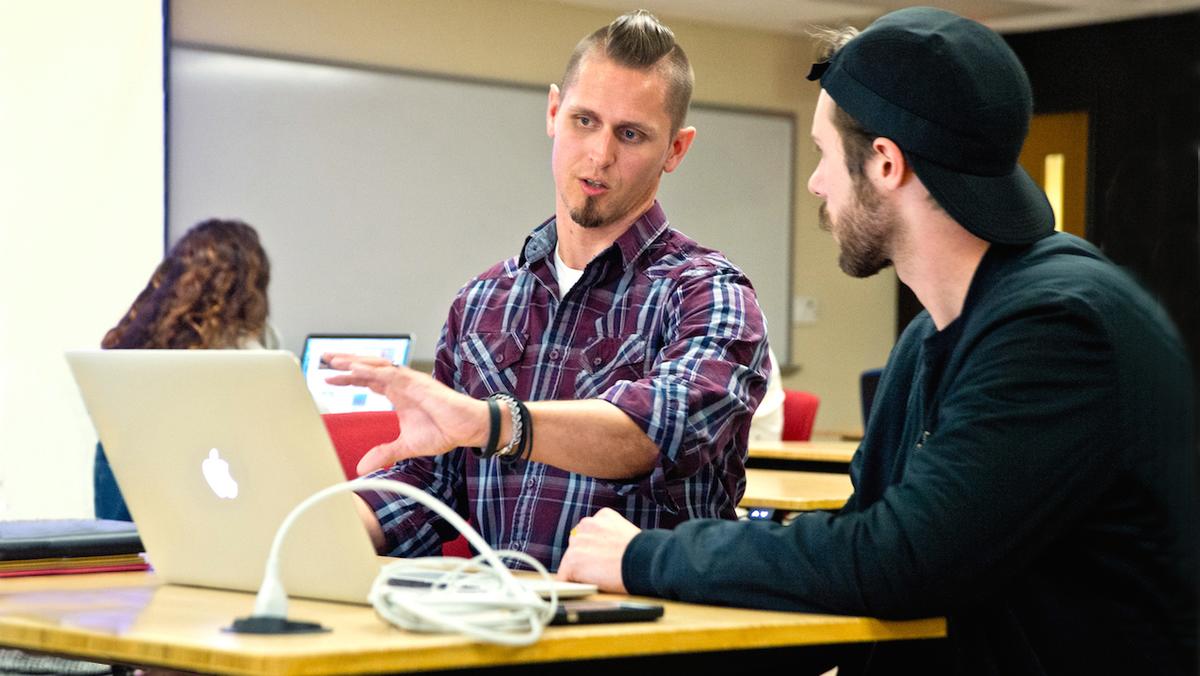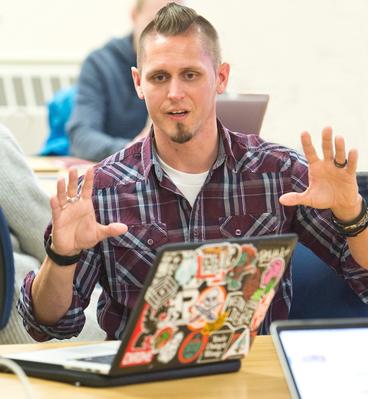Homer Rutledge had a feeling he couldn't shake off. Interactive technology was on its way. "I knew it was coming," he says. "I could feel it."
Wi-Fi had already taken off. "People were buying ipads and tablets and smart phones." He could see it was just a matter of time before wireless technology was virtually everywhere. He examined and often replicated innovations by internet giants, such as Google.
So, he contacted nearly every advertising agency in Minneapolis. He knocked on doors. He explained how motion graphic designers, animators, and interactive designers could make the products clients wanted.
CREATING MOTION
His perseverance got him employment. From his UMD graduation in 2003 to 2013, Homer worked as an interactive designer for ASI Marketing; a motion graphics designer for Splice, a motion picture and film agency; and senior designer for Carrot, a health industry marketing agency. He also worked as a graphic design instructor at the Miami Ad School.
Homer dove into projects. While he wasn't fond of "writing code all day," everything else he worked on was an adventure. His background in type, print, and two-dimensional graphic design informed his animation work. His storytelling ability was put to the test. One special effects scene had him transforming footage of a building in Minneapolis into a building in a war torn city. Next he animated a projectile attack and created an explosion in the building. His extensive skill set offered him diverse roles with all of his employers.
All the while, Homer followed all the activity in the user experience movement. Some of his projects had come close, but he still felt there was a whole world waiting for exploration.
That's when a friend sent him a job posting for a position at Google in Mountain View, Calif. Interviews, a design problem, and lots more interviews followed. It was 2013. Homer got the job. He showed up for work, excited, and ready for assignments.
He's called a UX Designer or user experience designer. More specifically, his Google title is UX/UI Motion Lead at Google – the UI stands for user interface. He was the first person hired as a UX Motion designer at Google, and since then, Google has expanded to three or four dozen across the company. Homer interviewed most of them. He now leads a team, that he built, comprised of three other UX Motion designers. The goal of Homer's team is to assist people "as they navigate and explore their world by improving the ease of use and pleasure provided in the interaction with the product." Along with designers, writers, researchers, and engineers, "We bring motion to the screen because it draws the user in," he says.
Google is always striving to make its products better. Right now, Homer works with Google Maps. He holds up an iphone to demonstrate his work. He flicks his finger across the screen and the map moves from one city to the next. He touches a dot and a pop-up window appears with the name, address, and phone number of a restaurant. Those are innovations from his team. "We anticipate what the user wants to see, and we build it for them," he says.
Homer's idea, the one that he just couldn't shake, has taken him thousands of miles and through more than a dozen years. It's come to fruition and billions of people are feeling its impact.
There's lots more to work on and there is one question left. What's next? Whatever it is, it is sure to be great.

